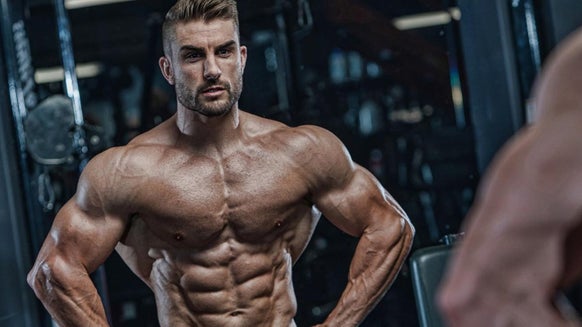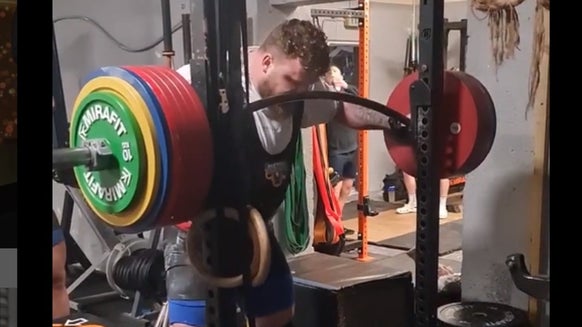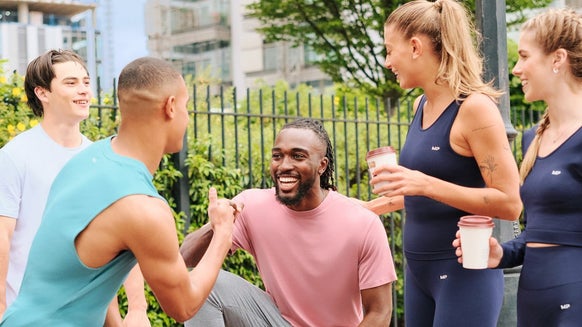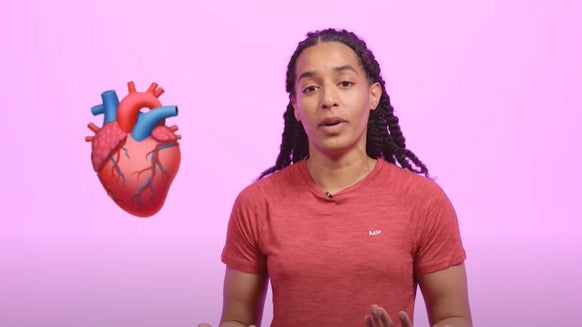Safe and effective training in combat sports can be eloquently described as the following:
“That's upgrading your software without damaging your hardware”
In this excellent analogy “software” is the skills and technical attributes required to perform optimally, and in the case of combat sports involving striking, “hardware” is predominantly concerned with the brain and the subsequent effect of multiple concussions.
Obviously in other sports, such as Brazilian Jiu Jitsu and Judo, “hardware” may also include health of joints and ligaments. It may also concern the effects of excessively hard resistance training and over training syndrome. However, in most instances sparring is damaging to an athlete due to the risks of repeated concussions and the effect this may have on the brain long term.
The long term neurological effects of concussion are placed under the umbrella syndrome diagnosis of chronic traumatic encephalopathy, previously known as dementia pugilistica or “punch drunk syndrome”.
Studies suggest that there is no predictable staging of this syndrome, and that variable symptoms can become apparent as a result of injuries to various parts of the brain (1).
Below I will outline the top 10 tips for safe & effective sparring to attempt to reduce the chance of concussion during sparring, as well as preventing other injuries for which you may be at risk!
#1. Wear a head guard
Head guards are a uniform component of amateur boxing instituted to reduce the effect of head injuries (6).
In other sports there is variability in whether protective equipment is suggested as a tool to reduce injury risk. Specifically in combat sports however, the use of head guards during sparring should in my opinion be mandatory.
Of the few combat sports studies, there seems to be a reduction in the magnitude of the head’s acceleration after being struck (11). In addition, the use of appropriately heavy weight gloves as well as an efficient head guard is suggested to:
? Improve performance of the guard and prevent reduction in force impact reduction over time with significant use (12).
#2. Pre assessment
When I start working with a new combat sports athlete or team for any injury, I suggest we start taking measurements to act as a baseline measure for a number of specific parameters.
This will include number of previous injuries, specific duration/ volume of training over the last 6 months; as well as physical and performance characteristics (e.g. vertical jump height).
The other component of this battery of tests is neurocognitive testing. These would be tests looking at memory function, reaction time and speed of cognitive processing (speed of thinking); as these characteristics are deemed appropriate and important in identifying the presence of a concussion (22-23). In simple terms, if you get knocked around too much in sparring and a randomly timed re-test shows these characteristics is altered, then you may have suffered a concussion.
I simply administer the test, and it is important to note that a neuropsychologist is the one who would be required to evaluate the results. However, it does allow me to guide my athlete to ease off sparring, with definite results to show them when they question why!
These tests are not currently utilised as normal routine for these athletes as there are identified issues with the research currently available (24). However, due to the likely underestimation and self reporting of post concussion symptoms (25); the use of such databases remains a top priority in my management of combat sport athletes.
#3. Wear a mouth guard
There is admittedly also some controversy as to whether mouth guards reduce the rate of concussion during combat sports competition.
On one hand cadaver and laboratory studies show that mouth guards
Also, player studies in American Football show that the self reported incidence of concussions is significantly reduced when using a mouth guard (15).
The largest amount of evidence DOES suggest that whilst injury risk specific to concussions is not definite, the use of mouth guards does provide significant benefit in protecting catastrophic head, neck and orofacial injuries (21). For example, jaw fractures or getting your teeth knocked out.
#4. Keep count
There is a growing concern regarding the potential impact of acute concussion on all athletes in contact sports, but never is it more important than in combat sports.
Evidence suggests that frequency of exposure to repetitive head trauma (e.g. number of fights, years spent fighting or specifically the Fight Exposure Score, is associated with neurological brain changes (such as reduced brain tissue volume), changes in processing speed and cognitive impairment (26).
As such, studies of professional fighters (MMA, boxing, etc.) such as the Professional Fighters Brain Health Study being undertaken at the Lou Ruvo Center for Brain Health Research at the Cleveland Clinic in Las Vegas, USA (27) are very important.
The initial results collected from this centre support the idea that reduced size of a key area of the brain (the thalamus) and speed of processing are associated with combat sports participation (28).
There is an indubitable violence underpinning combat sports which leads athletes to have a greater risk during sparring. Whilst concussion is a relative risk in striking sports, other combat sports predispose the participant to various other injuries. For example, grappling sports (BJJ, judo) may predispose to greater likelihood of joint injuries.
As such, as part of the data collection of neurocognitive performance, I will also collect various injury related variables which occur for my athletes during training camps. For example, this would include:
? Number of sparring sessions undertaken (minutes per week)
? Number of significant episodes of head related trauma (e.g. potential concussions)
? Rate of concussion related symptoms (such as number of headaches weekly)
? Number of acute injuries occurring (minor tweaks, sprains, muscle strains)
This allows us to collect a history of exposure to traumatic stimulus and guides us to manipulate training programmes if episodes recur too often!
#5. Training Partners
It goes without saying that sparring should be a simulation of the competition.
As such preparing for a fight with a partner who is 50lbs (22Kg/ 3 and a ½ stones) heavier than you is unlikely to prepare you for what your opponent will use in the match.
Sure, grappling with a bigger, stronger individual will increase your strength also; however their speed, agility and flexibility may not be similar to that you will face in competition.
Also, if you are 10 stone getting hit in the head by a 15 stone athlete is unlikely to be pleasant. Plus you are placing yourself at greater risk of concussion- this is partly why weight classes in combat sports exist in the first place.
As a rule I advise sparring partners should only be one weight class above or below the one you are competing at (or a maximum of 15lbs/ 7kg/ 1 and ½ stones heavier).
#6. Keep the volume down
No combat sports athlete should feel obliged to follow the outdated maxim that hard sparring is the way to prepare for competition. By this point I mean keep the volume (frequency) of sparring down to the minimal you feel required to perform optimally.
Yes, exposure to a 100% intensity sparring session (well protected), can prepare you for the hormone flooding experience of a first competitive fight- however sparring is not the only way.
When you have been exposed to this stimulus, practical fight technique can certainly be sustained and improved with specific drills- particularly with the use of an expert pad holder.
These types of drills can push your endurance and power whilst drilling movement patterns to build instinctive reaction in the ring. The trainer can push his athlete and place pressure on him positionally by backing him into the corner or keeping up the frequency of strikes.
#7. Shadow sparring
On more than one occasion I have had to explain to observers in the gym what I and other athletes I have been training with are doing when we shadow spar.
People think that we don't know what we are doing - before I explain that this is a specific component of training.
Motor pattern consolidation and reactive training for competition, which is gained by sparring, can also be built by performing reduce tempo, technical sparring.
This is where you and a partner spar in a way where contact is light and movement is reduced to an agreed tempo (e.g. 60% of maximal capacity).
This allows you to slowly drill certain aspects of training such as footwork, body positioning or striking angles and placement!
#8. Removal-from-play
As an additional component to the symptom/concussion status, database it is essential to have a measure or tool to use following a concussive incident.
This is what is described as a removal-from-play tool to evaluate characteristics such as speech, brain function, language and memory. It can also be used as a return to play measure when preparing to return to full contact training.
There are a number of tools which can be used to evaluate a potential acute concussion, including the Standardized Assessment of Concussion (SAC) and the Sport Concussion Assessment Tool (SCAT3) (30).
One tool which has gained attention specifically in combat sports is the King-Devick test.
The King Devick test is one objective measure I use as a sideline concussion tool. It is an accurate and reliable method to identify those athletes who are presenting with concussive symptoms in mixed martial arts and boxing (31).
It takes only a few minutes and gives instant feedback for the coach and athlete. It incorporates subconscious eye movements; neurophysiological and psychological characteristics such as attention and concentration; speech and language; and other elements of brain performance (brain speed, memory and reaction time).
It does however require a baseline for which you can make comparisons so would need to be part of your pre evaluation test battery. So then if the speed of the test is reduced post potential concussive incident, then you can be assured that your athlete should be removed from contact training and should be evaluated by a medical professional.
#9. Respect the tap
Ego has no place in combat sports training. However, being dominated in any competitive endeavour is a hard thing to deal with for any serious sports person. However, that is where maturity and discipline become essential for any athlete who practices combat sports.
I suggest that every sparring session whether in a striking or a grappling session should have a specific objective of what fight specific situation you want to practice or which specific techniques you want to drill. As such sparring sessions should be a component to the pre-event training regime, rather than part of the off season training for the athlete.
? Sparring should be accumulated during the pre event phase and then tapered prior to the competition.
Objectifying the focus of sparring takes away the excessive competitive edge to the session which can sometimes lead sparring away from being a useful tool for development, into a risky ego battle from which you learn nothing.
? Tap early, tap often and learn from each sparring opportunity!
#10. Wear the right gloves
Picking the correct weight gloves for sparring is a difficult task.
Firstly, combat sports often use different weight gloves during competition. For example, in most professional boxing and kick boxing organisations glove weights are designated by your body weight on competition day (e.g. your weight class). If you weigh (approximately) less than 70kg you will likely use 8oz gloves, if you weight more than 70kg you will likely use 10oz gloves.
? In mixed martial arts the Unified Rules state that a competitive glove should weigh 4-6 oz.
? In Taekwondo, World TKD Federation regulations approve gloves which are less than 4oz.
However, using lighter weight gloves (4oz-8oz) for all sparring sessions may predispose the athlete to potential hand injuries (including fractures) (32). This risk can be attenuated (however not completely removed) by the use of well applied hand wraps/ taping prior to sparring sessions.
Another concern is the effect of your glove type on your sparring partner. Studies show that a lighter glove can have approximately 2-3 times greater velocity when a punch is thrown, compared to a glove 10oz heavier (33). This would lead to a potential increased risk of an acute concussion.
However, another argument is that a lighter glove may provide a more acute risk for concussion (and for facial laceration), but the contrast- a heavier glove- leads your partner to be open to repeated blunt force trauma for a longer period prior to ceasing activity.
? As such it has been suggested that wearing heavier gloves (>12oz) during sparring may lead to your partner suffering greater risk of long term neurological consequences.
? I suggest the predominant degree of sparring should be undertaken with 10oz-12oz gloves, and 16oz gloves should be saved for the heavy bag. Obviously safety is optimised with the use of head gear also (as discussed earlier).
? Shadow sparring sessions with light or no head contact can be undertaken with 4oz gloves; as can force and speed technical punch sessions on a double end bag.
Take Home Message
Sparring is an important component to combat sports training. However, the “train hard, fight hard” mentality places athletes at risk of both short and long term medical consequences (namely concussion related).
In order to shield your self from these risks, each athlete, coach and team should take steps to use the appropriate protective equipment, prepare for the likely chance that an athlete may get injured during sparring, and design training programmes using variable intensity sessions.
References








